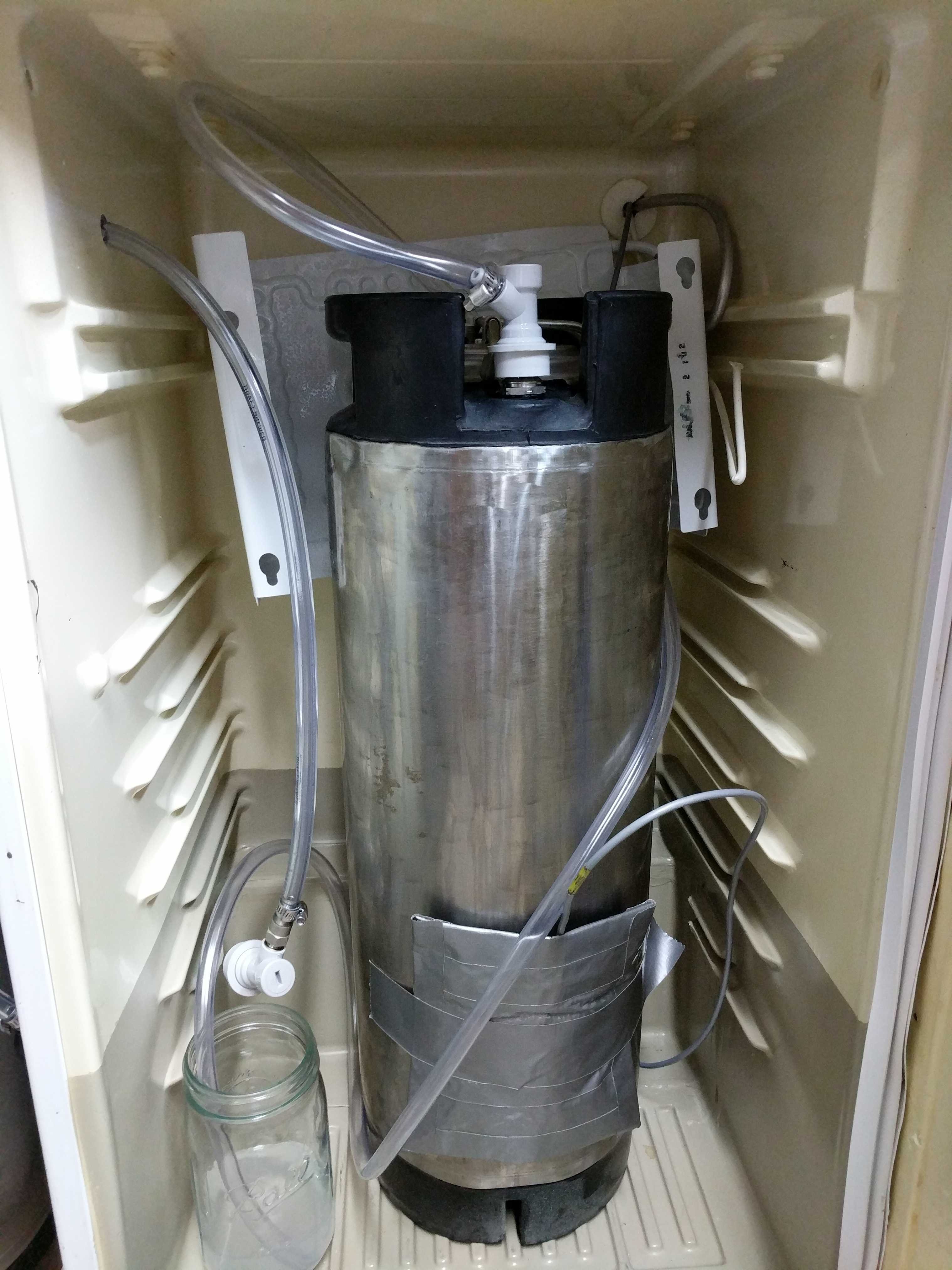My question is if blow off gets into the SK, what do you do about it? Just leave it?
I usually backflow it... just blip the FV PRV a little bit and it'll suck it right back to the main. Still closed loop.

My question is if blow off gets into the SK, what do you do about it? Just leave it?
so when we are talking about adding sugar/finings/etc to the keg, and going through the PRV hole with a funnel- is there an easy way/trick to do this? or just wrench the PRV out and then quickly screw it back once done? some positive co2 pressure?
and no need for CBC or F2, we are just using the main yeast for carbing?
I'm finally getting around to setting this up and have a couple of questions:
1. When you water purge your kegs, do you deaerate or scavenge the water first? There isn't much left in the keg, granted, but it seems like a potential oxygen source. I've been using StarSan for my keg purges.
2. My fermentation chamber isn't big enough for two kegs, so before I drill a hole through the side of it, what pressure should I have the SK set to, given the different volume and temperature compared to the FV headspace and lower fermentation temp?
Thanks!
Thanks! That was easy! Just need one of those cool thermowell corny lids. :beer:
I just put a blob of plumbers putty to shield the temperature probe from the ambient air, and if there is any difference between the actual temp of the liquid and what the probe reads, its a couple tenths of a degree at most.
When i tried to insulate the probe on the outside of the keg it was a couple degrees different than the thermowell probe registered. It was warmer in the thermowell than the external probe registered. Greatest difference was during peak fermentation and got lesser as fermentation progressed.
Better than nothing for sure, but it's much more stable in the thermowell. Consequently the compressor cycles less too.
Yah spunding is one of the most highly underrated processes in home brewing. So many advantages.
I'm becoming less of a fan of it early in fermentation though. I find it easier just to blow off and once things calm down, then spund.
What are your thoughts against using mild pressure at the start of fermentation?
I'm thinking about putting two kegs in series, the first one to catch the blow off, and spund with the second. What's one more keg to clean, right?
but you are saying that if the gas line in the fermenting keg gets blocked you end up with potential for 100 psi and at best a wrecked batch?
Time for a dumb idea...feel free to tell me what I am missing:
Here's the idea - instead of (or in addition too?) water purging the serving vessel, why not just push a half gallon or so over from the FV while at peak fermentation? Yeast move over with some wort, eat all the O2, and Bob's your uncle? I am a firm believer of the KISS principle (yeah, even though I am a DIY homebrewer!) and it seems to me that this might work well. What am I missing here? Could even work for the times when I use my larger system for 5 or 10 gallon batches.
I'll give 3.5 psi a try. I used a blow-off last time, but didn't get anything using the Fermcap.It’s possible. I don’t go over about 3.5 psi.
I also have switched to doing blow off for the first half of fermentation so I don’t get as much of a mess in my keg QDs and tubing.
It’s possible. I don’t go over about 3.5 psi.
I also have switched to doing blow off for the first half of fermentation so I don’t get as much of a mess in my keg QDs and tubing.
I regularly go over 10psi. Often times I will start between 5 and 10 psi in the first 12 hrs and hold it there for 3-4 days before raising it to 25psi for the remainder of the ferment.Not certain but i think the number where you start to impede yeast growth and performance is around 10psi. 25 is definitely no bueno unless you are at FG or near it.
I regularly go over 10psi. Often times I will start between 5 and 10 psi in the first 12 hrs and hold it there for 3-4 days before raising it to 25psi for the remainder of the ferment.
Some perspective here too...
Every 30” of beer in a tank exerts 1 psi. (I know this isn’t exact, but close enough)
Applying 20 psi is like having a 50’ tank.

With the Fermcap, I haven't had krausen come out of the gas post yet, but that could change with this batch. TBD.
Should I attach the SK and spund when the ferment starts to slow, or wait a little longer?
Hopefully it's ready to ship for a comp on 1/26. Cheers!
Enter your email address to join: